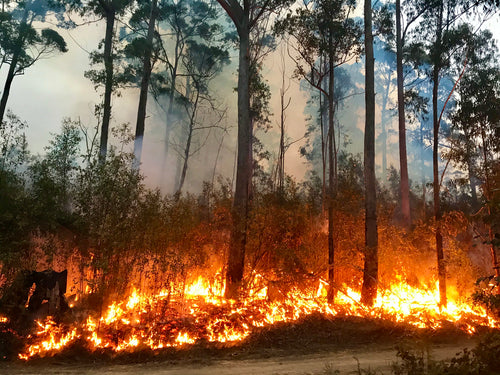
A Checklist to Safeguard Your Home
As the bushfire season approaches, preparing your home is crucial to increase its chances of survival in the event of a fire.
Whether you plan to stay during a fire or to evacuate early, taking these steps can not only protect your property but also help firefighters and reduce risks to your neighbours.
A well-prepared home is more likely to withstand a bushfire or ember attack, and there are key actions every homeowner can take to safeguard their property.
A home prepared for bushfire season is:
- Easier to defend, either by you or by firefighters
- Less likely to endanger neighbouring homes
- A safer place if you are unable to leave due to a sudden fire threat
Following these preparation steps will give you a greater sense of security and help protect what matters most.
Top 5 Steps to Prepare Your Home for Bushfire:
1. Trim Overhanging Trees and Shrubs
Cut back any trees or bushes that are close to your home. Overhanging branches can act as a bridge for flames, allowing the fire to spread to your property.
2. Maintain Your Lawn and Clear Debris
Regularly mow your lawn and remove grass cuttings. Keeping the area around your home clear of dry grass and vegetation gives firefighters a safer area to defend and reduces the risk of fire reaching your home.
3. Remove Flammable Materials from Around Your Home
Store firewood, mulch, door mats, and outdoor furniture away from the house. Regularly clear these flammable materials from gutters, roofs, and the area surrounding your home. Doing so reduces the likelihood of embers igniting a fire.
4. Clear Gutters and Roof Areas
Clean out leaves and debris from gutters and roofs, as embers can land in these areas and start a fire. Consider installing gutter guards to make this task easier in the future.
5. Prepare Water Sources and Hoses
Ensure you have sturdy hoses that can reach all areas of your property, along with a reliable water source like a pool, tank, or dam. Keep a petrol or diesel-powered pump available in case electricity fails during a fire.
Other Key Actions to Prepare for a Bushfire:
Seal Any Gaps Around Your Home
Embers can easily enter through gaps in doors, windows, or even garage doors. In fact, garages are one of the most frequently overlooked threat to a home, as the largest home opening. Sealing these areas is essential. If not already fitted to your home, consider using flame-retardant seals Cleverseal Cinderseal™ to protect your garage. Cinderseal™ is designed to withstand ember attacks, self-extinguishing upon contact, which reduces the chance of fire spreading into your home.
Prepare an Emergency Kit
Your kit should include essentials like water, a first aid kit, medications, and any important documents. Store this in a safe, accessible place.
Develop a Bushfire Survival Plan
Have a plan that outlines what to do if a fire threatens your home. Include escape routes, meeting points, and communication methods.
Four Simple Steps to Prepare for Bushfire Season:
1. Discuss Your Plan
NSW Rural Fire Service strongly recommends that everyone in your household has conversation about what to do in a bush fire, it should only take 20 minutes. Agree on where to go and how to stay in touch if separated.
2. Prepare Your Home
Use the checklist above to get your home ready for bushfire season. These practical steps can make a huge difference in an emergency.
3. Know the Alert Levels
Familiarise yourself with the different bushfire alert levels so you can act quickly when the situation changes. Monitor the Fire Danger Ratings daily at www.rfs.nsw.gov.au/fdr.
4. Stay Informed
Keep key contact numbers, websites, and apps on hand to stay updated on fire activity. Keep up to date with fire warnings by following official sources like the Bureau of Meteorology and local fire services. The NSW RFS Fires Near Me website and app is a must-have for real-time updates.
Be Prepared to Defend
If you choose to stay and defend your home during a bushfire, you will need the right equipment and the knowledge to act quickly. In addition to hoses and water sources, you may need:
- Protective clothing (e.g., wide-brimmed hat, eye protection goggles, long sleeves, sturdy boots, gloves)
- Ladders to access inside the roof
- Shovels, metal rakes, buckets and mops
Keep in mind that firefighters may not be able to reach your property immediately during a large bushfire, so it’s essential to be self-sufficient if you plan to stay. Preparation is the best defence when it comes to bushfires.
By taking these practical steps, you can increase your home’s chances of survival and protect your loved ones.
Find more information on the hidden gaps in fire protection.

